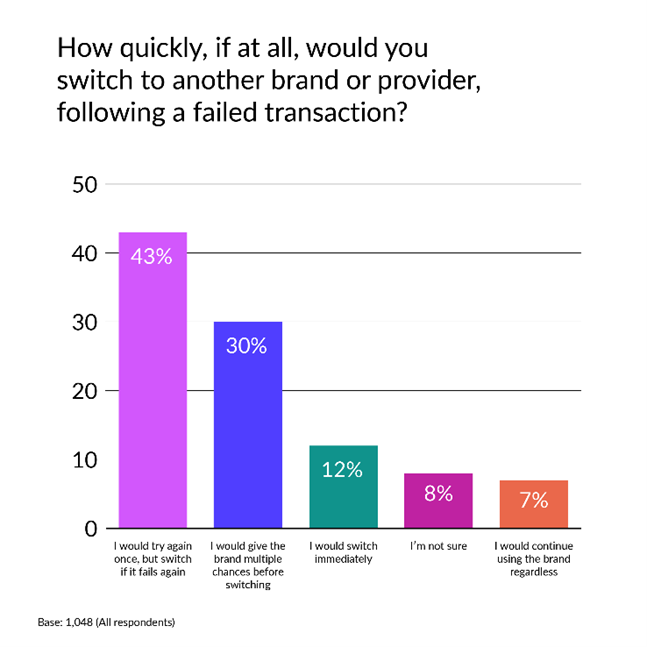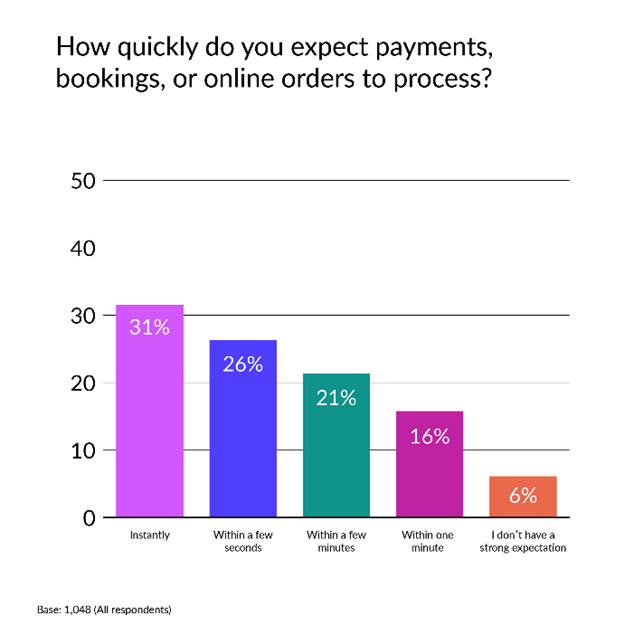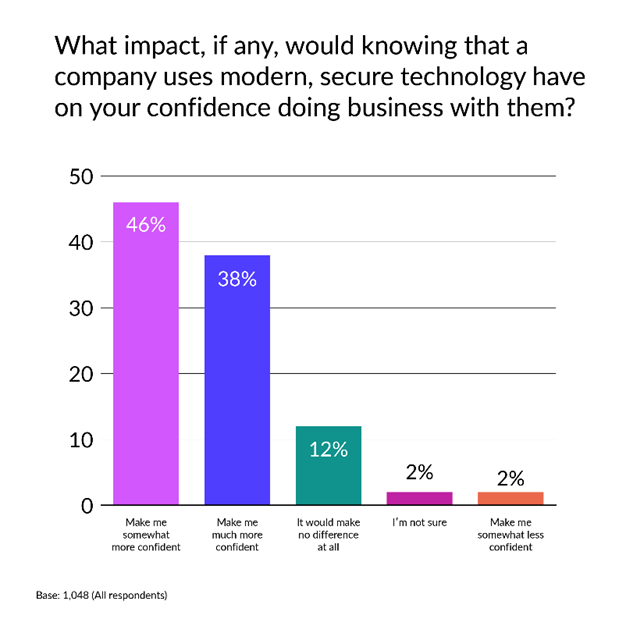
One glitch away: Why digital trust defines retail success this holiday season
One glitch away: Why digital trust defines retail success this holiday season
As U.S. consumers feel their wallets tighten and retailers brace for more cautious spending this holiday season, every single online sale matters.
According to new data from Rocket Software’s Consumer Insight Survey, retailers can’t afford even a moment of friction: a slow-loading page, a failed payment, or a confusing checkout is enough to send a shopper elsewhere.
Today’s consumers have very little patience and plenty of other options.
Winning Over the Impatient Consumer
Recent research underscores just how little margin for error retailers have. Forty-three percent of consumers say they’ll give one chance after a failed transaction before they switch brands, and more than half expect payments or bookings to process instantly or within a few seconds.


The takeaway is clear: Consumer tolerance is at an all-time low. Whether it’s a slow-loading page, a confusing interface, or a payment that doesn’t go through, shoppers notice — and they remember. In an economy where budgets are tight and expectations are high, trust is fragile. One technical misstep can undo months of marketing or loyalty-building efforts.
So, how can retailers stay ahead of that curve?
Foundational Tech Meets Modern Expectations
Many enterprise retailers still operate their online stores on outdated technology stacks — piecemeal e-commerce platforms retrofitted to their brick-and-mortar infrastructure that was built for another era. For many, these systems feel “good enough” because they have served them well for years. However, retailers who have yet to modernize are more vulnerable to downtime, performance issues, and the erosion of consumer trust — especially during high-traffic events like flash sales or peak shopping weekends.
They also risk falling behind in how they understand their own customers. Legacy systems often limit the ability to collect, unify, and analyze customer data, making it harder to personalize offers, predict churn, or build loyalty over time, meaning short-term losses compound over the long run.
Meanwhile, consumer expectations are being set by the industry’s largest players. Shoppers are conditioned by the lightning-fast, seamless experiences offered by Amazon, Shopify, and other big-box competitors who can afford to do what it takes (including absorb short-term losses) to win long-term loyalty.

Almost 9 in 10 consumers factor in how secure and seamless the technology behind their digital experiences feels. That means technical fragility (e.g., slow APIs, failed payments, poor inventory synchronization, or website latency) directly translates to lost revenue. Even seemingly minor issues, such as promo codes that fail or unintuitive site navigation, can erode confidence and cost sales.
The good news: Modernization doesn’t require rebuilding from scratch. By taking targeted steps to upgrade critical systems and automate core processes, retailers can dramatically improve agility and create a competitive, trustworthy experience that aligns with consumer expectations.
How to Build Digital Trust and Reliability
Modern consumers may not see the infrastructure behind a website, but they feel its impact instantly. Every page load, payment, and confirmation email communicates something about a brand’s competence and care. For retailers, that means technology decisions are business decisions. Every investment in performance, stability, and security pays dividends in customer trust.
Here are five practical ways enterprise retailers can strengthen performance and trust:
- Stress test before the surge.
Simulate heavy traffic to identify bottlenecks in your checkout, payment, and inventory systems before they happen. Real-time testing helps reveal hidden dependencies that can slow or crash a site when it matters most. It’s better to isolate and correct them ahead of time, rather than experience downtime during peak and lose out on the sales caught in the middle. - Modernize critical integrations.
Outdated plug-ins and brittle payment gateways are often the weakest links in an otherwise strong site. Replacing or upgrading them with modern, cloud-ready solutions adds both speed and redundancy when traffic peaks. - Make trust visible.
Consumers look for subtle cues that signal security: recognizable payment icons, SSL certificates, and transparent policies on data use and returns. These small signals reinforce credibility and can make the difference between a completed sale and an abandoned cart. - Monitor in real time.
Continuous monitoring tools can alert you the moment something breaks — often before customers notice. Building observability into your stack gives your teams a chance to respond in minutes, not hours, preventing small issues from becoming a full-blown crisis. - Optimize for mobile, where the majority of traffic happens.
More than 70% of retail transactions now start on mobile, yet mobile pages remain slower and more failure-prone than desktop. Ensuring a fast, intuitive, and trustworthy mobile checkout experience can protect your business when seconds count.
Compete on Confidence, Not Discounts
In an uncertain economy, shoppers are cautious, and their loyalty is fragile. All signs point toward this being such a moment — we are converging on slower growth, inflationary pressure, and record consumer debt.
But even in stressed economic times, competing on price alone is a race to the bottom. Instead, competing on confidence — the assurance that every click, payment, and confirmation will work as expected — builds long-term trust and repeat business.
Retailers who treat reliability as a core brand value will be the ones who thrive through volatility. Because when money is tight and choices are endless, consumers don’t just want a deal. They want certainty.
This story was produced by Rocket Software and reviewed and distributed by Stacker.



